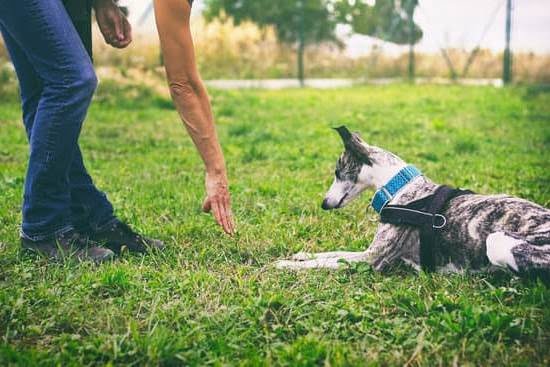Introduction
Using bells to train your dog can be an incredibly beneficial experience for both you and your pet. Bell training helps reinforce basic commands such as sit, stay, come and go, while also providing a way for the dog to alert you when they need something. It can teach them to alert you to their needs without barking or whining, is less disruptive than traditional methods of training, and is relatively easy to implement. With some patience, bell training is a great tool you can use to help overcome behavior issues in your pup and have a better relationship with each other.
Benefits:
Bell training is not only quieter than other traditional methods of obedience training – it’s also easier for the dog. Dogs don’t naturally understand human language and tones that we use during verbal commands, so ingraining instructions by associating specific actions with a noise (bells) makes it more effective for the pup to learn quickly. Additionally, having an external device like bells allows pets who normally bark or whine at their owners out of habit to signal their needs in a quieter way that doesn’t distract from other activities in the home. This method of training will also reduce stress on both pet owners and the animal because it eliminates verbal punishments frequently associated with puppymolding process such as yelling if they disobey a command or break rules within the house.
Training Sessions:
Before getting started, it’s important to make sure that your dog has been given some basic obedience lessons prior to starting bell-training sessions; this will ensure that they have an understanding of what behaviors are expected from them. Also ensure that there isn’t too much distraction around so that the pup can focus on learning— this means limiting any other people or animals in close vicinity who could deter progress; giving him toys and treats may help keep his attention during these lessons as well! Next step is hooking up a bell on either side of door leading outside so whenever she wants out she will ring one as cues her desire . Once this is all set up properly go ahead and associate order words like “outside” with actual act ringing bells by repeating word when she does ring bells correct way reward then with treats . As time continues incorporate different command words bells , for example instead saying “outside”, say “go potty” until she understands use same techniques below small doorways throughout house door knob heights time rewards always fades start tapering off giving fewer rewards till eventually stop completely but will know new cues after enough help increase communication between owner pet building healthy trusting relationship!
The Right Way to Buy the Bells – Size and Quality
When it comes to training your dog with bells, it is important to make sure that you are selecting the correct size and quality of bells. You want to be sure to choose a bell size that is small enough for your dog’s paw so that they can comfortably touch or tap it when prompted. It is also important to make sure the bell itself is durable and of good quality. Cheaper materials may break quickly, leaving you with an unresponsive training tool. A variety of shapes, sizes and materials are available, making it vital to determine which one best suits your pup based on their preference and needs.
Assessing Your Pet’s Understanding of Bell Training
Before beginning to train your pet with bells, it is important to assess their understanding of the process. Start by placing a bell near the door and clicker in hand, then call your pet’s name and make sure they look at you. If they don’t respond, make sure to reward them with small treats or verbal praise when they eventually come to you. This will help create a positive association between their responses and ringing the bell for exiting purposes. Additionally, try moving their paws onto the bell until they are accustomed to the sound. This will allow them to become comfortable with hearing the sound associated with going outside so that it will be easier for them to learn later on in the training process.
An Easy Step-By-Step Guide to Training Your Dog
1. Start by purchasing or designing a set of bells. You need to choose something that can make a sound loud enough for your dog to hear. The bells should also be easy to hang and light enough for your pup to shake as they are walking towards the door you have designated for them to use when they need to go potty.
2. Hang the bells on the doorknob or handle. Make sure it hangs at a height that your pup can reach easily, so that it does not seem out of their reach and cause them frustration.
3. Encourage your pup when they first approach the bells–speak in an upbeat, enthusiastic tone, hand them treats, pet them and give praise when they show interest in the ringing object.
4. Repeat steps 2 and 3 throughout several training sessions until your pooch starts to associate ringing the bells with visiting the restroom outside and being rewarded afterwards.
5. Now it’s time for action! As soon as you see that your pup needs to relieve themselves (for example pacing around near the door, scratching or sniffing at it), take them in front of the bells and give a verbal cue like ‘go potty’ as a reminder then ring all of the bells together with one final reward after successful relief outside -– this should remind your pup how it works each time they feel like they need an outing in future!
6. Finally, never forget rewarding good behavior even if they still need more reminders -– over time this will create an effective response and eliminate any guesswork when it comes to potty-time roles & responsibilities!.
Understanding and Responding to Resistance During Training
When training a dog with bells, it is important to be aware of and respond appropriately to any resistance they may exhibit. Resistance can range from a dog refusing to comply with commands or directions, to physical resistance such as pushing against your hand or pawing at resources you may be holding. It is important to stay calm during these moments and not react in an aggressive manner, as this could lead to further stress for both you and the dog leading to longer-term issues in the training process. Instead, try redirecting the behavior by gently prompting them out of the position they are in and then rewarding positive behaviors. Additionally, if possible use positive reinforcement such as treats and verbal praise after successful obedience cues or even just when they focus on you rather than resist. Remember that consistency is key; repeating a command multiple times while consistently using the same reward system will help ensure successful results going forward.
Additional Training Considerations
When training a dog with bells, it is important to remember that the process should be a positive one. Positive reinforcement techniques are often the most successful when teaching dogs new behaviors. Positive reinforcement can take many forms, but some of the most common include treats, verbal praise, petting, and enthusiasm. During training, rewards should be given after each success and any corrections should be given in a calm and authoritative manner. Training sessions should not last too long or become too repetitive as this may cause the dog to become frustrated or disinterested. It is also important to remember that consistency is key when it comes to training – dogs need consistent commands and reward schedules in order to learn optimally. Regular practice will help ensure successful results while using bell systems for dog training.
Principles of Effective Bell Training
One of the most effective principles of training a dog with bells is consistency; your dog needs to understand that when it rings the bell, you will always respond in a consistent manner. If you don’t always open the door or reward him for ringing it, he won’t learn that ringing means it’s time for a potty break. This consistency also applies to where and how you hang the bell. You should choose an area that is easy for your dog to reach and ensure that it remains in its place at all times when not being used so your pup can have quick access to it as soon as they need to go out.
Another key principle when training a dog with bells is positive reinforcement; this means rewarding them every time they make use of their bell correctly. Provide treats each time they ring the bell or open the door themselves. With this frequent encouragement, they will learn more effectively and appreciate those rewards which generate more enthusiasm and willingness to pull it again in the future. Additionally, try not to leave the bells on all day so your pup doesn’t get confused or develop an aversion towards them; rather use them during teaching sessions only and always give sufficient praise whenever they use them successfully afterwards.
Ensuring Continued Success – Rewards and Maintenance Training
Rewards and maintenance training are essential for ensuring that your dog continues to be successful with their bell training. When your dog performs the desired behavior, you should reward your pup with great enthusiasm. This reinforces the behavior, making it much more likely to occur in the future. In addition, don’t forget to regularly practice the commands that you taught during the initial training. This will keep the commands fresh in your pup’s mind, enabling them to retain what they’ve learned. As time goes on, work on encouraging complex relationships such as ringing the bell multiple times before allowing your pup out of their crate or getting what they want. Additionally, when things don’t go right during a training session; don’t get frustrated or angry with your pup; instead be patient and focus on positive outcomes. Finally, if you have pet sitters or other people who interact extensively with your dog while you’re away; make sure they are aware of – and adhere to – the same training guidelines you have set for yourself in order to ensure consistency throughout all interactions with your pup and promote continued success!
Conclusion
Training a dog with bells for potty time can be an extremely beneficial process for both the dog and the owner. Not only does it enable your pup to communicate their need for outside time, but it also helps train them to relieve themselves in the desired area. Furthermore, bell training instills good basic behaviors and builds trust between pet and owner. It can even limit the risk of negative behaviors while reinforcing positive ones. When utilized correctly and consistently, bell training can help build a lasting bond between you and your pet that benefits you both well into adulthood!

Welcome to the blog! I am a professional dog trainer and have been working with dogs for many years. In this blog, I will be discussing various topics related to dog training, including tips, tricks, and advice. I hope you find this information helpful and informative. Thanks for reading!





